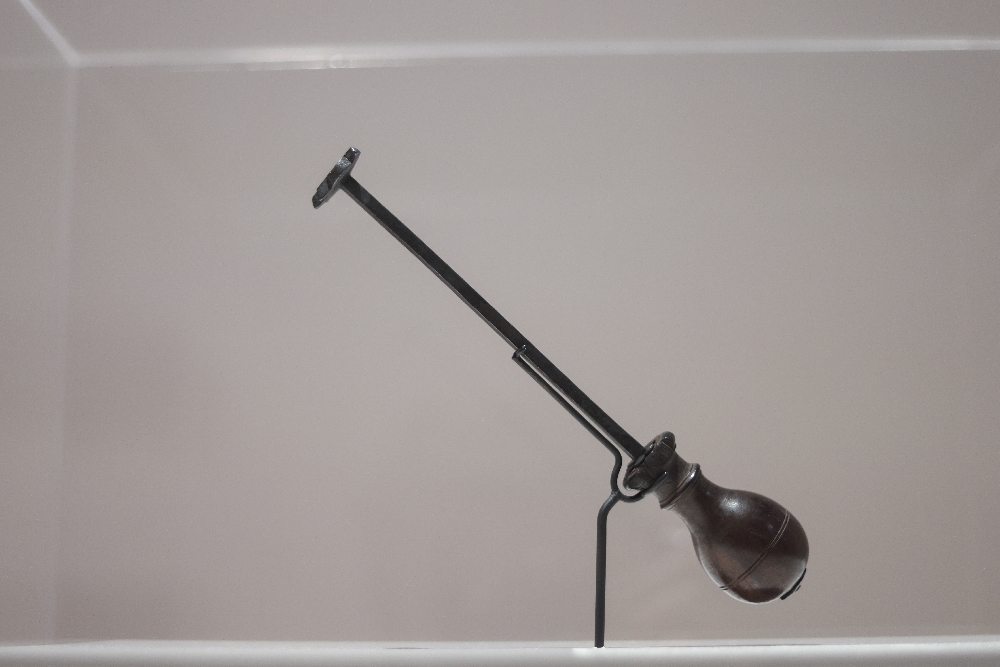Amsterdam (AFP) – A set of leg irons that once chained slaves by the ankles for punishment. A pair of Rembrandt portraits of a rich Dutch couple dressed in slavery-funded finery.
Dozens of objects like these go on show on Tuesday at the Dutch national Rijksmuseum as it opens a landmark exhibition on slavery highlighting the Netherlands’ dark colonial past.
Focusing on the stories of 10 people ranging from enslaved people to slave owners, the show covers 250 years of Dutch involvement in slavery in Suriname, Brazil, the Caribbean, Asia and South Africa.
Curators at the museum in Amsterdam say they want to start a “better conversation” in a country still reckoning with its role in colonialism, and with questions raised by the Black Lives Matter movement last year.
“This is national history, not just for a small group but for every one of us,” Valika Smeulders, head of the Rijksmuseum history department, told AFP during a preview.
“The colonial past is an important element in our national history. So it was timely, as it was not done before, to present an exhibition on slavery.”
In a sign of the changing times, Dutch King Willem-Alexander will formally open the exhibition Tuesday. It will open to the public as soon as coronavirus measures are lifted for museums, but be viewable immediately online and for school parties.
– Burned to death –
Called simply “Slavery”, the exhibit traces the 10 individual stories using both objects from the Rijksmuseum’s collection — some never seen before — and from other museums.
But it also uses songs and oral sources, which visitors listen to on an audio tour, to fill the gaps where no records exist.
“They tell about people who had to leave their children behind, or they feel they’re treated as tools and not human beings,” said Eveline Sint Nicolaas, senior curator in the history department.
One story is that of Wally, a slave on the Palmeneribo plantation in Suriname, who took part in a slave revolt in 1707 and escaped but was then recaptured and burned to death.
Paintings of slaves on the plantation sit alongside a manuscript detailing Wally’s interrogation by slave owners.
Like the other stories in the exhibition, his tale is told in the audiotour by someone with a connection — in his case Dutch former world champion kickboxer Remy Bonjasky, whose ancestors are believed to have fled the same plantation.
Elsewhere sit the austere portraits of affluent Amsterdammer Oopjen Coppit and her husband Marten Soolmans, which they commissioned legendary artist Rembrandt to paint in 1634.
Soolmans’ family made a fortune from a sugar refinery supplied by slave plantations in Brazil. After he died, Oopjen remarried to a man who had once kept slaves in Brazil.
“We know Oopjen had several links with slavery and that’s also very interesting,” said Sint Nicolaas. “It really affected Dutch society in many ways, it wasn’t history that just happened far away in the colonies.”
– ‘Very important subject’ –
The entire exhibition, previewed by AFP, features jarring contrasts of art and atrocity, brushstrokes and branding irons.
What was long thought to be a gilt dog collar in the museum’s collection may actually have been a neck ring for a slave. Closer inspection of Dutch family portraits reveals slaves in the shadows.
Similarly, while the Netherlands’ history of colonialism under the Dutch East India Company and Dutch West India company remains widely known, Dutch links to slavery have themselves also remained hidden away.
“The history of slavery is something that people in school have not been taught a lot about, and at the same time you see that in the public debate it is a very important subject,” said Smeulders.
The Rijksmuseum is itself also confronting the role of slavery in the “Golden Age” of Dutch art that it houses, adding extra information to 80 objects in its permanent collection to highlight “hidden links to slavery”, it said.
The Netherlands has never formally apologised for its role in the slave trade.
But Prime Minister Mark Rutte admitted last year in the wave of the Black Lives Matter protests that racism remained a problem in the Netherlands.
The time is now right for the Rijksmuseum to address the issue, said Smeulders.
“Yes, you could even say that we should have done this earlier. But when we decided to do this, we wanted to do it well,” she said.
Source: New feed


